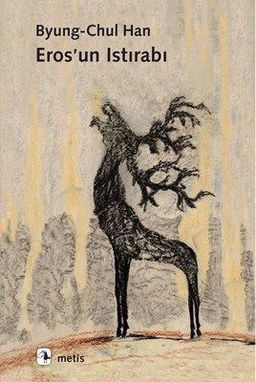Ömer Faruk Alişan
@omeralisan
Doktor
Malatya Fen Lisesi, Ankara Üni. Tıp Fakültesi
Rize, Fındıklı
Rize
19 okur puanı
Mart 2023 tarihinde katıldı
Şu anda okuduğu kitaplar
Sanatların insanların davranış larını biçimlendirmediği ve tutkularına yapay bir nitelik kazandırmadığı dönemlerde, "görenekler kaba, ama do ğaldı". Bu yüzden insanlar, "birbirlerinin ruhuna kolaylık la nüfuz edebiliyorlardı"
Okur Takip Önerileri
"Dilbilimden sosyolojiye, insan davranışına dair bütün teorileri terk edin. Taksonomiyi, ontolojiyi, psikolojiyi unutun. İnsanların davranışlarının ardındaki nedenleri kim bilebilir ki? Esas önemli olan, böyle davranıyor olmaları ve biz de bunu emsalsiz bir doğ rulukla ölçebiliyoruz. Elinizde yeterli veri olduğunda, rakamlar her şeyi açıklıyor."
Badiou siyasetle aşkı doğrudan ilişkilendirmeyi reddeder ama siyasi bir fikir uğrunda angajmandan ibaret olan yaşamla, aşka özgü olan yoğunluk arasında "bir tür gizli salınım" olduğu fikrinden yola çıkar. Bu ikisi "sesleri ve güçleri birbirin den tamamen farklı olan, ancak büyük bir müzisyen tarafından aynı müzik parçasında bir araya getirildiğinde esrarengiz bir uyum sergileyen iki farklı enstrümana" benzemektedir.5 Başka bir yaşam formuna, başka, daha adaletli bir dünyaya duyulan or tak arzu olarak siyasal eylem, daha derin bir düzeyde Eros' la iliş ki içindedir. Eros siyasal ayaklanmalar için bir enerji kaynağı oluşturur.
Becerebilirsin, performans öznesinin düpedüz bin bir parçaya ayrılmasına yol açan muazzam baskılar üretir. Kendi kendine uyguladığı baskı ona özgürlük olarak görüneceğinden, aslında ne olduğunun farkına varamaz. Becerebilirsin, becermelisin'den bile daha çok baskı üretir. İnsanın kendi kendine uyguladığı bas kı, bir başkasının uyguladığı baskıdan çok daha ölümcüldür, çün kü kişinin kendine karşı koyması mümkün değildir. Neoliberal rejim baskıcı yapısını, kendini artık tabi olan özne olarak değil de, planlanacak bir proje olarak kavrayan tekil bireyin görünür deki özgürlüğünün ardında gizler. İçinde yaşadığımız rejimin esas hilesi işte budur. Dahası, başarısızlık kişinin kendi suçudur ve bu suçu artık hep yanında taşıyacaktır. Kendi başarısızlığı için suçlayabileceği hiç kimse yoktur. Artık borçtan kurtarma ve ke f aret ödeme olanağı da kalmamıştır. Bunun sonucunda sadece bir borç krizi değil, mükafat krizi de baş gösterir.
Üretkenliğin artırılması için -ebilir /-abilir ile ikame edilmiş tir. Motivasyon, inisiyatif ve proje çağrısı, sömürü açısından kır baçlardan ve emirlerden çok daha verimlidir. Kendi kendinin gi rişimcisi olan performans öznesi, emir veren ve sömüren bir baş kasına tabi olmadığı ölçüde özgürdür ama gerçekten özgür de ğildir, çünkü artık kendi iradesiyle kendi kendini sömürmektedir. Sömüren sömürülendir. Kişi aynı anda hem faildir hem kurban. Kendi kendini sömürü başkasının sömürüsünden çok daha ve rimlidir, çünkü bir özgürlük duygusu eşliğinde iş görür. Bu saye de, tahakkümsüz sömürü mümkün olur.
Bir zaman gelecek, saygı duyulacak dişi cinse;
O yakışıksız, eski iftira
Yapışıp kalmayacak üzerimizde, asla
Modası geçecek eski çağların erkek ozanlarının
Ve de yazdıkları sadakatsiz kadın şarkılarının
Yaşayan ve irade sahibi olan yaratıklar içinde biz kadınlar
Kuşkusuz en zavallılarıyız. Büyük bir bedel ödeyip
Bir kocaya vardığımızda, onu bedenimizin de sahibi olarak
Kabul etmek zorundayız.
Euripides and her misogyny
Always compromising, always accommodating –and that, you see, is how a woman earns her security: never argue with your husband!
